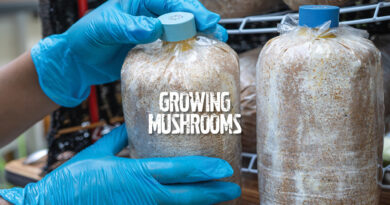Common Decorative Plants That Are Also Edible
Ever wonder why you see so many old homesteads with plants like daylilies, hostas, and lilacs? While these flowers certainly have a natural beauty, they are also valuable in ways modern society tends to ignore. Believe it or not, many ‘decorative’ plants are also edible!

Important Disclaimer
As with any wild foraging, always research the plant species you are dealing with to be sure it’s safe to eat and delicious.
Daylillies are entirely edible, whether it be the root, shoot, or flower. The roots are similar to potatoes. Be sure you know what variety you have grown because the wrong type can have harmful effects.
Lilacs
We appreciate lilacs for their beautiful flowers and scent, but did you know you can eat the blossoms and also use them to make tea? Lilac tea is said to have a slightly sedative effect similar to chamomile that can help calm the nerves after a long day of work.
Hostas
The hosta is another common decorative yard plant that is edible (ask the deer)! In some places, humans eat them too, either fresh or fried. They’ve been prepared in Japan for generations and have a taste similar to spinach.
Rose
The rose isn’t just another pretty face. Commonly found around old homes and harbors, rose petals are used for a variety of things, including rose water. If prepared properly, rose hips are a great source of vitamin C. Fully remove all of the seeds to avoid any harmful side effects.
Dandelions
Widely viewed as a weed, dandelions are a wild blessing! When dug up, the roots can be used for tea, and the leaves and flowers can be eaten in a salad. Discard the stem of the flower.
Chicory
Similar to a dandelion, chicory can be dry roasted and used as a substitute for coffee.
Golden Rod
Here’s another tasty flower that makes a beautiful golden tea. Golden Rod was even used to replenish American tea supplies during the Boston tea party!
Food For Thought
Perhaps our elders knew a little something we didn’t about planting around the house and eating well. Many plants can be used for food all around us. It seems it’s time to open our eyes to the wonders of nature, even in our back yards.
Let’s get back to the garden and grow.
Tom Wall
Growing up on a deer farm located on 79 acres of land along the banks of one of Lake Michigan’s tributaries, Tom grew a love for nature and all the beauties it could hold. Through that passion Tom has channeled his influences into educating the community on sustainable agriculture, becoming an activist, writing for magazines and creating music tuned to nature in his band Cosmic Knot.
Latest posts by Tom Wall (see all)




